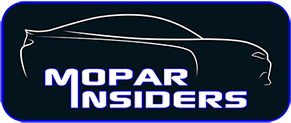- Joined
- May 4, 2018
- Messages
- 1,809
- Reaction score
- 1,496
- Points
- 113
The new engine family is called GSE - short for Global Small Engine Family, so group-wide small engine family. Nickname: "Firefly". Since 2016 FCA builds the variant without turbo ("N3", "N4") for the Brazilian Fiat Uno. At the Motor Symposium in Vienna, the group showed the first time the turbo version: The engines T3 and T4 come with 120 hp and 190 Newton meters (1.0 l displacement, three cylinders) or 180 hp and 270 Newton meters (1.33 l displacement, four cylinders).
When designing the new drive, the engineers scrutinized the extent to which components of the Fire engines could be reused. The first prototype took over the crankshaft of the old drives. Later, the developers tested versions with old cylinder heads. Ultimately, it only managed the long-stroke design in the GSE engines .
With this design, a compact combustion chamber can be realized. FCA claims to achieve good turbulence and short flame paths. Both variants receive direct injection with a fuel pressure of 200 bar, four valves per cylinder, a MultiAir and an exhaust manifold integrated in the cylinder head.
In this way, the warm-up phase of the engines shortens. Especially small bearings on the crankshaft reduce the friction. Both save fuel. Engine block and cylinder head are made of aluminum. FCA claims to build a lighter engine than the competition. It weighs 91 with three cylinders and 110 kg with four cylinders.
The T3 and T4 engines start as standard with a small monoscroll turbocharger. It allows a liter output of about 90 to 100 kW and a liter torque of 190 to 200 Newton meters. In the long term, the use of a twinscroll turbocharger is planned. However, FCA does not yet provide any information on this.
In the preliminary configuration, the engines meet the new emission standards according to WLTP . However, the realistic RDE cycle requires load ranges that increase particulate emissions - a common problem for direct-injection engines. Therefore, the manufacturers install a gasoline particulate filter directly behind the catalyst.
That there is a variant with three cylinders, decided only during development. The engineers noted thermodynamic advantages over a four-cylinder with the same displacement. Both variants are similar in bore and stroke (70 mm x 86.5 mm) and in the compression (10.5: 1). The camshafts are driven by a silent chain. The current FIRE engine has a timing belt.
The new design will be significantly more economical than its predecessor. A diagram from the development shows that much less fuel is injected, especially at high loads. The predecessor is cooled here with comparatively much fuel ("full load enrichment"). An important development step, because FCA has big plans: The GSE engines are to be sold long after 2025.
When designing the new drive, the engineers scrutinized the extent to which components of the Fire engines could be reused. The first prototype took over the crankshaft of the old drives. Later, the developers tested versions with old cylinder heads. Ultimately, it only managed the long-stroke design in the GSE engines .
With this design, a compact combustion chamber can be realized. FCA claims to achieve good turbulence and short flame paths. Both variants receive direct injection with a fuel pressure of 200 bar, four valves per cylinder, a MultiAir and an exhaust manifold integrated in the cylinder head.
In this way, the warm-up phase of the engines shortens. Especially small bearings on the crankshaft reduce the friction. Both save fuel. Engine block and cylinder head are made of aluminum. FCA claims to build a lighter engine than the competition. It weighs 91 with three cylinders and 110 kg with four cylinders.
The T3 and T4 engines start as standard with a small monoscroll turbocharger. It allows a liter output of about 90 to 100 kW and a liter torque of 190 to 200 Newton meters. In the long term, the use of a twinscroll turbocharger is planned. However, FCA does not yet provide any information on this.
In the preliminary configuration, the engines meet the new emission standards according to WLTP . However, the realistic RDE cycle requires load ranges that increase particulate emissions - a common problem for direct-injection engines. Therefore, the manufacturers install a gasoline particulate filter directly behind the catalyst.
That there is a variant with three cylinders, decided only during development. The engineers noted thermodynamic advantages over a four-cylinder with the same displacement. Both variants are similar in bore and stroke (70 mm x 86.5 mm) and in the compression (10.5: 1). The camshafts are driven by a silent chain. The current FIRE engine has a timing belt.
The new design will be significantly more economical than its predecessor. A diagram from the development shows that much less fuel is injected, especially at high loads. The predecessor is cooled here with comparatively much fuel ("full load enrichment"). An important development step, because FCA has big plans: The GSE engines are to be sold long after 2025.
